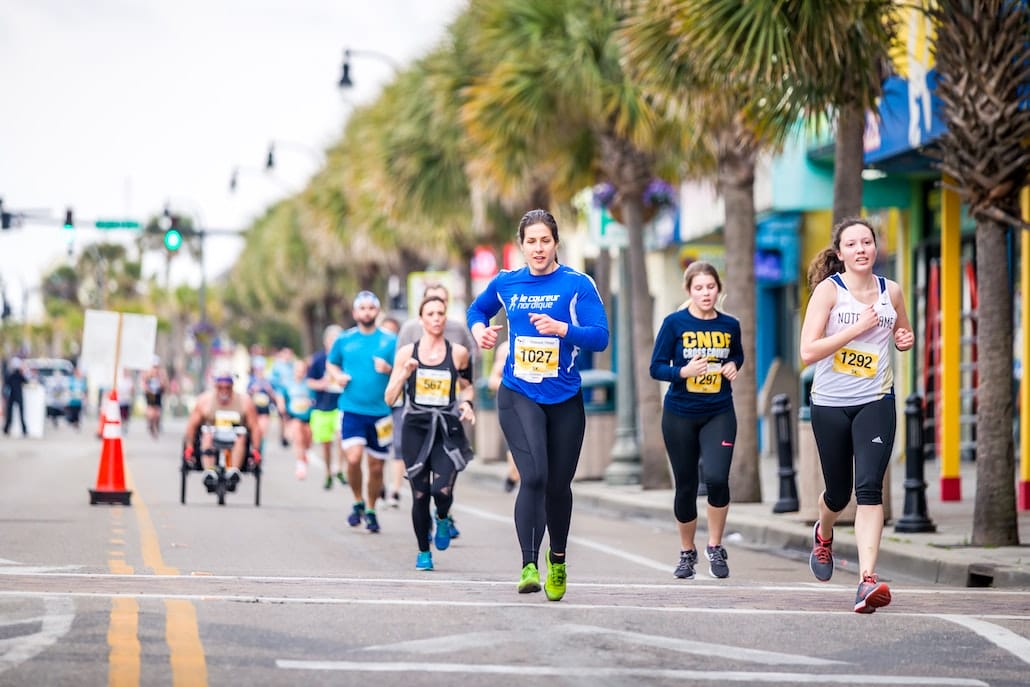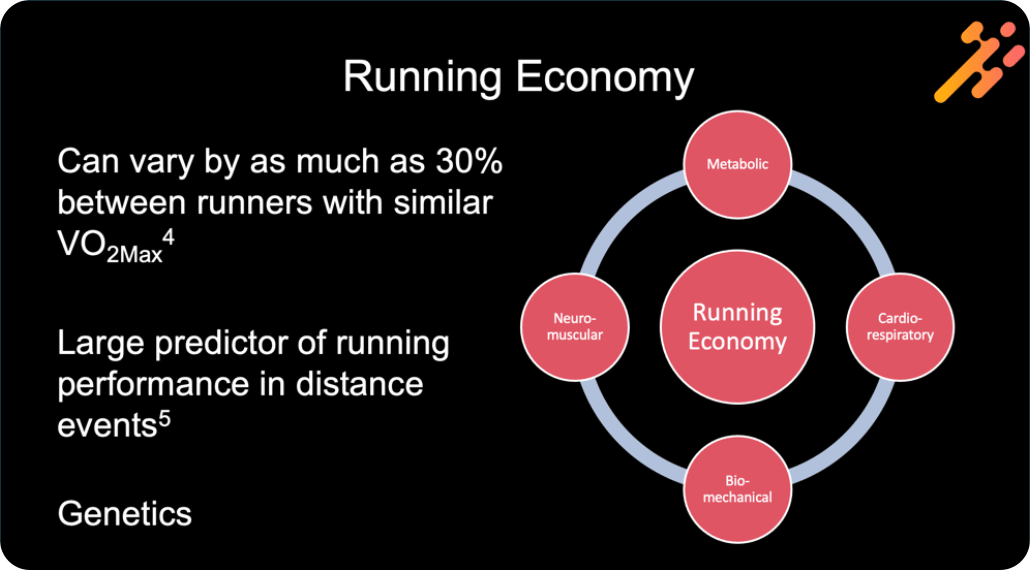Have you ever seen a race photo and wondered if that is really what your running gait looks like? Chances are…no, that is not what your running gait looks like! A true gait analysis is not something that someone can do by looking at you run with just their eyes or by doing a quick picture or slow motion video. Running is a highly skilled activity, and not something we are born knowing how to do. Our running gait (AKA running form) does not have to be perfect, but it is a skilled activity that each runner can know and improve their running gait to boost running performance and assist in injury prevention.

In this article we want to show you why every runner should get a gait analysis by explaining what the benefits are, identifying what things can be measured, and explaining how this can be incorporated into run training programs. (medical/fitness professionals, you may want to skip down to how we break down the gait cycle and/or check out our free courses and certification courses for our systematic gait analysis approach).
Benefits of Running Gait Analysis
If you can reduce the stress of every step while running by 10%, you can run twice as far before your body breaks down! [1] Considering that injuries and lack of consistency with run training are big limiters to performance, this is a big deal.
Reducing stress by 10% is easy to do, and that is why everyone, from recreational runners to elites, can benefit from understanding their unique running gait. If you think about running, it is one of the only sports people do not practice. All runners do is train (excluding most sprinters and fellow running nerds like myself). It would be the equivalent of a basketball practice, only consisting of five-on-five scrimmages with some sprints at the end. Let me convince you why you should know and practice your running style.
Running with better form can offer various benefits, from making running more enjoyable to reducing risk of injuries. Running with better form can offer various benefits, from making running more enjoyable to reducing the risk of injuries. Changing running form can even address specific injuries, such as knee pain. Over many years of working with all levels of runners, here are some of the main benefits my athletes have expressed:
- Reduced pain and fatigue while running
- Increased speed with reduced effort
- Higher mileage on shoes before they break down (financial health!)
- Learning the correct type of shoes for you (more on this below)
- Understanding how your flexibility and strength impact your running gait
Running Economy
In addition to the numerous benefits above, I want to introduce the concept of running economy. Running economy is similar to miles per gallon in your car. How much energy do you need to put in to get speed out.
Many people have heard about VO2 max and assume that this is the primary determinant of running performance. In fact, running economy can explain the variance between runners of similar abilities.

So, how does this relate to your running form? Your running biomechanics are one of the factors that determine how efficient runners are. Strength is another big factor, and you can check out our article on how to add strength training to running here.
The point with bringing up running economy is that most runners think they only need to check out their running gait when they are injured. However, I have worked with some of the top professional runners and military personnel to help them significantly boost their performance by changing their running form. Stop wasting energy and become an efficient runner!
What is part of a gait analysis?
At a basic level, a gait analysis will look at how a runner moves throughout the running gait cycle. The two main phases of running are stance phase (foot is on the ground) and swing phase (foot is off the ground). We can further break down the running gait cycle into initial contact (when the foot his the ground), mid-stance phase (when the foot is ~halfway through stance phase) and terminal stance phase (sometimes called toe off or take off).

The big difference in the walking gait cycle and running gait cycle is a period of float during running where both legs are off the ground.
What is measured?
This is where things start to vary based on who is doing your analysis and what equipment they have available. More important than what is being measured is the accuracy and reliability of the measurement, as well as how that information informs the runner on how to improve their running gait.
Biomechanics
This can often be a catch-all term, but in this context we are referring to a measurement of the changes in positions of your body and the joints. Sometimes this is also referred to as kinematics. 3D (high-tech cameras and sensors) is the gold standard for any running biomechanics and offers the highest level of accuracy and reliability. 2D done at a high frame rate can help identify running mechanics, but lacks reliability for most measures and should be thought of as more of a qualitative analysis than a quantitative analysis.

Examples of biomechanical measurements can include knee flexion or hip rotation throughout the various phases of the running gait cycle. Examining this data to see how it compares to normative data or looking for asymmetries can offer valuable information.
Many of the biomechanics are measured during stance phase, but there is valuable insight from swing phase mechanics as well. Most people will be familiar with their foot strike position (i.e. heel striking or forefoot), but foot strike is only a small portion of what can be measured.
The upper body can be measured, but there is less normative data for upper body mechanics and receives less attention. That does not mean arm swing it is not important, but it does mean we often look at the lower body first.
RunDNA uses biomechanics to put runners into categories. Each category has specific warm ups, drills, and running cues that are used to optimize your running efficiency. An example category is the overstrider.

The overstrider is someone who lands with their foot far out in front of their body at initial contact, causing high braking force. These running mechanics can slow speed and increase stress and this is often associated with a longer stride length. An overstrider may try cues to increase step rate (cadence), drive the knee, or change their lean angle while running. Check out the video below to see the difference between an overstrider and a collapser. What category do you think you would be?!
Kinetics
Kinetics is a term used in research setting to identify the forces acting on the body. Ground reaction forces are measured while the foot is in contact with the ground. Many researches look at forces at initial contact, but it is valuable to look throughout the complete gait cycle. The gold standard for measurement is a force plate, and often one integrated into a treadmill. This is very expensive, and not often found outside of research facilities.
There has been less emphasis on forces in the running research recently. Although I would gladly take a force plate treadmill if someone gave me one, I do believe that the data can lack guidance on what is causing forces and still need kinematic data along with it to make a decision on changing running form.
Temporospatial
A fancy word for something that you might look at for every run! Many wearable devices now offer great data on each run. In 2016 I did a research study that validated some of these numbers, including cadence (number of foot strikes in a minute), vertical oscillation (up and down motion), ground contact time (the time one foot is in contact with the ground)
You can use this data to get you started and observe your trends. If you change you form, these measures can be a reliable way to see if you are making changes or if you change form as you fatigue.

Pressures
More often these days, you will see pressure treadmills and 3D mapping of the foot. This can be helpful to identify differences in the left leg and right leg, but similar to forces it does not give much insight into why.
Often you will see pressure sensors when deciding on shoes. These sensors may help to identify pronation and supination during the running gait cycle, but that is only a small piece of the puzzle. Many running stores are now using the RunDNA Helix 3D to compare running shoes based on your complete lower body mechanics. [Find a provider near you]
Using running gait data
I believe that one of the reasons that few runners actually get a gait analysis is because they have never really been told what to do after. At best, a gait analysis may have helped you pick out your shoes. You may have also gotten insight into why you had a running injury. Either way, you probably were not told much about how to change your run form.
RunDNA has worked with top professionals and the military to find the formula to faster and healthy running, which is why I strongly believe that every runners should get a gait analysis. At the end of each session, runners are given detailed instructions based on their personal movement patters.
A RunDNA gait analysis starts with a Runner Readiness Assessment to identify flexibility and strength deficits. Running form is a big part of healthier and faster running, but runners need more. Limitations in flexibility or strength may determine what types of cues or training plan you can do to maximize results.
After the Runner Readiness Assessment, athletes do a gait analysis and are put into a gait category with specific programs. Each category’s program consists of a gait retraining program with walk/run and graded feedback. Adapting to the new form with a gradual approach has been shown to produce better results that last.

Finally, all of the results and programs are put into the RunDNA app where you get detailed instructions on exactly what you need to do. There are even videos to explain drills and exercises. You can sync you wearable to get accurate training load data, showing you how to avoid common mistakes in your run training.

How to Get Started
If you even remotely think you would benefit from a gait analysis, sign up for one today! We have over 1,200 providers that have taken our Certified Running Gait Analyst and Continuing Education courses waiting to help you.
I suggest that a runner gets analyzed at the start of any training program and at least twice a year even if they are not training. Your form doesn’t have to be perfect, but there is much to be gained by trying to make it the best you can. Things happen all of the time that can slightly change our form without even knowing it, which can lead to injuries without ever realizing it has changed.

Find one of our providers by visiting this page and get started today.
You can also join the RunDNA App and do a self assessment if there is not a provider in your area. Begin with the plan builder that will analyze your movement patterns and assign run training, strength, or flexibility programs personalized for you.
I hope this brings you success and joy with your running!
[app-cta]
